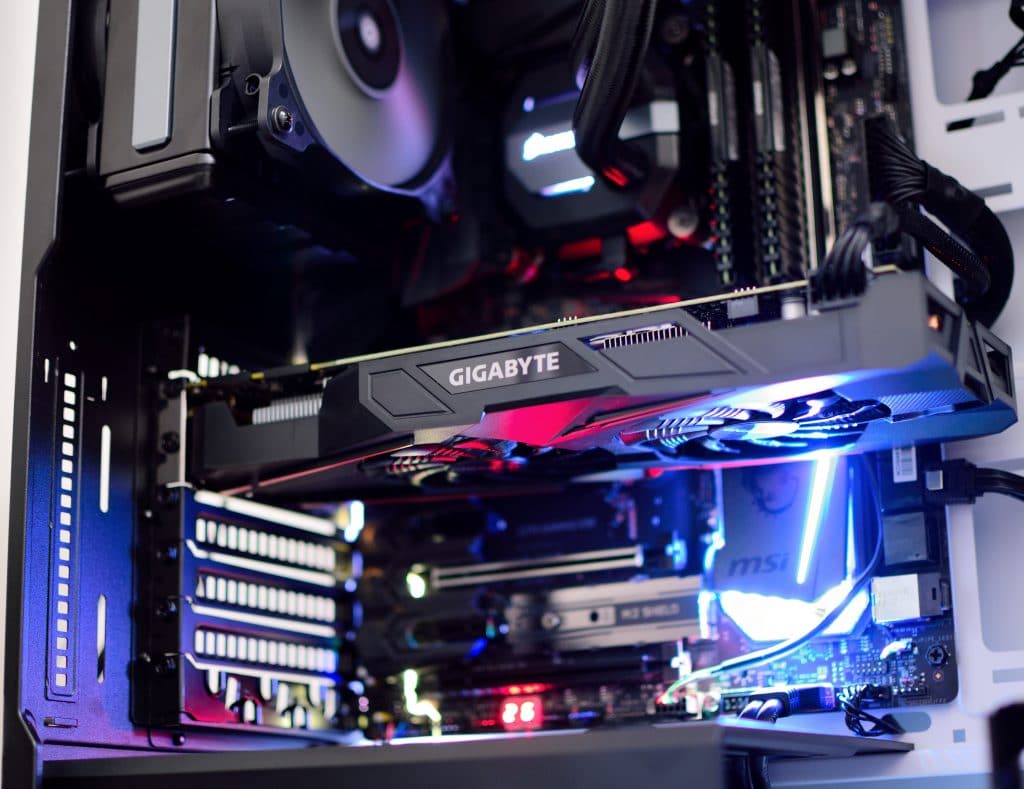
Cybersecurity is the body of technologies, practices, and processes designed to secure devices, networks, information, and programs from attacks, unauthorized access, or damage.
Cybersecurity can also be termed information technology security. The National Institute of Standards of Technology (NIST) encourages small firms and big corporations to put measures in place that can fight cyber-terror.
Cybersecurity is necessary because the government, corporate, military, medical, and financial organizations compile, process, and save vast amounts of information on computers and various devices. A large percentage of the data stored can be classified information, whether that is financial data, personal data, intellectual properties, or any other information for which unwanted access could bring negative consequences.
In the course of business operations, various organizations send and receive sensitive information across devices and networks. Cybersecurity is dedicated to securing that data, and the systems used to store and process it.
If you’re new to cybersecurity and have no background experience, you may want to become familiar with fundamental terminology by reading, “The 15 Cybersecurity Terms You Need to Know.” This glossary introduces you to industry jargon and basic concepts that can help you protect your own devices and personal information.
Network Security
Network security refers to the procedures and policies applied by a network administrator to prevent and keep track of undesired access, modification, exploitation, or restrictions of the network resources and the network. Well-implemented network security prevents malware, viruses, hackers, and more from accessing or modifying protected information.
The first stage of network security is enforced via a password/username mechanism, which enables access to verified users with specialized privileges. Once the user is verified and allowed particular system access, the firewall in use enforces network policies.
Firewalls do not always identify and block viruses or damaging malware, which can result in data loss. An intrusion prevention system (IPS) or antivirus software is applied to restrict harmful malware or/and viruses from accessing the network.
Information Security
Information security (InfoSec) defines a set of procedures for managing the tools, processes, and policies needed to avoid, detect, record, and fight threats to both digital and non-digital information. InfoSec responsibilities involve establishing several business processes that secure data assets regardless of the format or whether it is being processed, in transit or storage.
Most large businesses employ a security group to apply and maintain their InfoSec program.
Operational Security
Operations security (OpSec) refers to a process that includes the protection and identification of generally unclassified crucial processes or information that can give an adversary or competitor real information when compiled together. The information sought under OpSec is not sensitive.
However, it could provide an adversary or a competitor an added advantage. OpSec concentrates on identifying and protecting information that may contain clues or the power to place a business or an organization at a disadvantage.
OpSec is a procedure implemented in risk management that allows a manager to view projects or operations from the viewpoint of an enemy. The ICA integrity, confidentiality, and availability suggest that firms should have the necessary infrastructure in place to combat cyber-terror in case of a power outage or a security breach.
Cyber Attacks
A cyber attack is a form of adverse action that focuses on computer information systems, computer networks, infrastructure, or personal computer devices, utilizing numerous means to modify, steal, or destroy information systems.
The most common types of cyber attack include:
- Denial-of-service (DoS) and distributed denial-of-service (DDoS)
- Man-in-the-middle (MitM)
- Drive-by
- Phishing and spear-phishing
- SQL injection
- Password attack
- Eavesdropping attack
- Cross-site scripting (XSS)
- Birthday attack
- Malware
Importance of Education on Cybersecurity Issues

Understanding the necessity of cybersecurity by the information technology workforce is not enough; leaders at various government levels and industries must be able to come up with investment and business decisions based on extensive knowledge of potential impacts and risks of cybersecurity. Tribal, local, and state governments face similar issues.
The major issues for education include:
- Increasing general public awareness.
- Expanding the information technology workforce and the creation of cybersecurity jobs and enable students to access employment with cybersecurity.
- Promoting cybersecurity as an enterprise leadership responsibility.
- Protecting civil liberties.
By 2020, jobs for cybersecurity are expected to increase significantly, with the market anticipated to grow to $170 billion. The jobs with cybersecurity are increasing in the market gap, and it is growing to reach 1.8 million jobs by 2022.
Jobs for cybersecurity are flexible, and the good news is, anyone can target jobs with cybersecurity as careers and know how to identify and prevent cyber threats.
A cybersecurity degree program lasts for four years and focuses on the variety of techniques utilized to secure data and information systems.
READ: An Inside Look at In-Demand, Cybersecurity Jobs and Their Functions.
Types of Cybersecurity Threats

Malware
Malware defines the numerous forms of damaging software, such as ransomware and viruses. When malware gains access to a computer, it causes all sorts of havoc, from continuous monitoring of each keystroke and actions to controlling the computer, progressively risking personal confidentiality by discreetly sharing information from the machine or network to the home base of the attacker.
A cyber attack through malware will utilize different tactics to install the malware onto an individual’s or business’s computer. This can include sending a link that directs you to a fraudulent website, sending emails disguised as a regular email that a person often receives.
After opening the email attachment, you automatically download the malware, unaware that it might contain damaging content.
Phishing
In a phishing cyber attack, the hacker can send an email similar to other standard emails like those from close associates or coworkers. The email appears legitimate and may have a timeline attached to it. It can contain a link to click or an attachment to open. When one opens the enclosure or clicks the link, the malware will be installed on the computer.
Hence any end-user should be educated on security awareness to protect devices against phishing.
End users in a company are connected to the web mostly using laptops, desktops, smartphones, tablets, etc. These are doorways that can be easily used for cyber crime; therefore, keep these 4 tips in mind and get your team on board with best practices to avoid becoming a victim of a phishing attack.
- Never become complacent
- Invest in security awareness
- Keep everyone updated about the state of cybersecurity
- Make it easy to receive feedback
Ransomware
This type of cyber threat happens when ransomware is delivered on a victim’s PC via phishing emails. The unknowing user initially downloads an attachment from phishing emails and executes it. The ransomware then proceeds to insert commands into the registry allowing it to boot up alongside the operating system (OS).
The ransomware afterward establishes a connection with the hacker’s control server. The server follows by sending an encryption key to the ransomware. At this stage, the ransomware starts to encrypt and lock most or all of the user’s data. The attacker then charges to help the victims recover their files by providing a decryption key.
Did You Know: Global Ransomware Damage Costs are Predicted to Reach $20 Billion (USD) By 2021.*
*source: cybersecurityventures.com. Updated 6/24/2020
Social Engineering
Social engineering is a tactic used in cyber crime that is non-technical. It heavily relies on human interaction and mostly uses trickery to manipulate people to break standard security practices. Social engineering is different from traditional attacks because social engineering hacks can be non-technical and do not always include exploitation of the system or software.
Cybersecurity Best Practices

Best practices in cybersecurity encompass proven general methods such as being cautious when operating online, following company regulations and asking for help once you encounter something suspicious. Here are some of the best practices:
Enable firewall security at work and at home
Implementing a firewall for your home and company networks is one of the primary defenses in protecting data against cyber terror. A firewall restricts unwanted access to mail services, websites, and other data sources accessible from the internet.
Invest in security systems
This usually involves security like malware detection, antivirus detection, active security programs, continuous monitoring systems, and backing up of data to external hard drives. Investing in information technology security early could save employees and businesses from both legal and financial costs of cyber terror.
Install up-to-date security software and backing up your data
Maintaining the best information technology security practices means making sure your cybersecurity framework is advanced with the latest security programs. Antivirus and malware detection is continuously updated to respond and target advanced persistent cyber crime threats. This applies to personal devices too.
It is advisable to install security program updates as instructed by your company right away. This significantly helps in cybersecurity management.
Employ third-party controls
Jobs with cybersecurity firms are necessary because common information breaches start from inside the companies. Hiring a third party improves the overall cybersecurity framework.
Businesses and their employees are also required to keep an eye on third parties like those handling the cybersecurity jobs or consultants having temporary access to the computer network.
Embrace education and training
Smart companies have time to educate their employees on cybersecurity jobs. Their roles revolve around cybersecurity management. Companies might find themselves scrambling to engage top cybersecurity certifications to equip their IT team. The demand for skills in the cybersecurity profession offers vast opportunities.
Cybersecurity Certifications

Enterprises have recently learned the hard way about the importance of cybersecurity hygiene. One of the main difficulties facing businesses of any size is having the required staff to deal with advanced persistent threats. Numerous organizations offer training and cybersecurity certifications.
Elements of Cybersecurity

Network Security
Network security is a company’s or organization’s strategy that enables the protection of its properties involving all network traffic. It consists of both hardware and software technologies. Entry into the network is controlled by adequate network security, which focuses on a wide variety of threats and then blocks them from entering or multiplying in the system.
Digitization has transformed our world, bringing changes in our daily activities almost entirely. Businesses or organizations need to secure their networks to enable them to deliver the demanded services by customers and employees. This also protects the confidentiality of the organization and helps in risk management. With hackers developing advanced persistent threats continuously, the need for a network security tool becomes crucial.
Database and Infrastructure Security
Technology can assist in protecting databases. The companies provide a database firewall that manages the traffic flow from and into databases relying on a comprehensive knowledge of the underlying database communications. These devices comprehend the SQL statements that are passing to the back-end database and can restrict the ones that are viewed as dangerous.
Several devices for undertaking automated security audits can be found. They serve for the shared database and offer detailed reports of vulnerabilities in the security and suggest solutions to solve them.
Endpoint Security
Endpoint security refers to the process of protecting the numerous endpoints on a network, usually defined as end-user gadgets. Mobile devices, desktop PCs, and laptops, hardware like servers present in data centers are also viewed as endpoints.
The accurate definition varies between thought leaders in this security niche, but in general, endpoint security handles the risks associated with gadgets connecting to a company’s network.
Any device, for example, tablet, smartphone, or laptop, provides a threat entry point. Endpoint security focuses on effectively protecting any endpoint linking to a network, and it also restricts access attempts and various risky behaviors at these points of entry.
Endpoint offers additional protection, supplementing centralized security measures at the point of entry for various hacks.
Cloud Security
Cloud security consists of the technologies and practices that secure/protect cloud computing from internal and external cybersecurity threats. Cloud computing is the provision of information technology services through the internet. It has developed into a mainstay for current administrations and businesses. To secure information and applications in the cloud from emerging and existing threats, security solutions need to be implemented that restrict unauthorized entry along with the best cybersecurity management systems.
There are three categories of cloud security services being used:
1. Public cloud services, managed by a public cloud provider. These comprise software-as-service (SaaS), infrastructure-as-a-service (IaaS), and platform-as-a-service (PaaS).
2. Private cloud services, managed by a public cloud provider. These services offer a computing environment focusing on a specific customer, led by a third party.
3. Private cloud services, operated by internal staff. An internal team manages a virtual environment and offers entry to employees.
Identity Management
Identity management can also be called Identity and Access Management (IAM). It serves much more than just enabling users with logon abilities to a network or a system. Identity management is among the primary cybersecurity objectives that empower businesses to achieve a state of readiness in cybersecurity. While it intends to decrease cost and redundancy, it is also a core security function that aims to improve security and productivity. Identity management may appear to be a simple concept, but it holds a variety of layers and complications that must first be understood for its practical use.
The most popular identity management systems include password and username. These identity management systems are standard because they are binary in operation and inexpensive.
Generally, more expensive and sophisticated multi-factor authentication systems are needed for a closer relationship between the identity credentials and the user identity.
Additional Cybersecurity Measures
Tokens
A token-based system relies on an identity connected to a physical object that an individual has, the token, together with a PIN (personal identification number) or password that a person knows.
Biometrics
A biometric-based system connects a distinctive physical trait to an identity credential. Types of biometric elements involve:
- Fingerprints
- Retina scanning
- Hand geometry
- Handprints
- Facial recognition
- Voice recognition
Intrusion Detection System
An IDS continuously monitors network traffic looking for suspicious activity and identified threats, then sends notifications when such actions are detected. Intrusion detection, as a function, is still essential in up-to-date businesses, but it is not the only solution.
The general responsibility of an IDS is to notify information technology personnel that an intrusion is in the process of taking place. The notifying data will generally be composed of the intrusion source address, the type of hack that is suspected, and the victim/target address.
An IDS can recognize traffic that is viewed as noteworthy or universally malicious. Also, an IDS can notice traffic that attacks specific software. Some types of IDS include; network-based and host-based, perimeter IDS, stack-based IDS, VM-based IDS, anomaly-based IDS, and signature-based IDS.
Disaster Recovery
The necessity of Disaster Recovery cannot be underestimated or understated. Disaster recovery is a crucial segment of general risk management for both small and large enterprises. When a disaster strikes, the uninterrupted operations of any business relies on its capability to replace IT information and systems in the least time possible to control disruption and loss.
Business Continuity Planning
The ability of an enterprise to get through a disaster without significant effects on its operations directly depends on the cybersecurity and Business Continuity Planning (BCP) that was implemented before the accident. With an organization’s ICA integrity, confidentiality, and availability on the line, it is crucial to set aside enough resources for business continuity to be prepared in case of a disaster. Even after establishing the strategies and plans, testing contingency plans also need to be developed.
Data Security
Data security defines the defensive digital privacy measures that are implemented to avoid undesired entry to computers, websites, and databases. Data security also secures information from being compromised. Data security is a desirable aspect of information technology for businesses of every type and size.
Data security can also be referred to as computer security or information security (IS).
A backup is an excellent example of data security, also, data erasure and data masking. Encryption is a crucial data security measure, where hardware/software, hard drives, and digital data are encrypted and rendered unreadable to unwanted hackers or users.
The most common measure in data security is the use of authentication. Users need to provide a code, password, biometric data to prove authorization to gain access.
Mobile Security
Mobile security provides security to tablets, smartphones, laptops, and various portable computing gadgets and the network they are linked to from threats originating from wireless computing. Mobile security is also commonly known as wireless security.
Securing mobile devices is increasingly becoming necessary as users have expanded extensively, and on top of that, the number of portable devices has skyrocketed. Some of the top reasons for mobile security are:
- Device loss
- Application security
- Device data leakage
- Malware attacks
- Device theft
Application Security
Application security is the use of hardware, procedural, and software methods to defend applications from threats coming from outside. Protective measures installed into applications reduces the chances of an unwanted code being able to manipulate apps to steal, access, delete, or modify sensitive data.
The fundamental software defense measure is an application firewall that chokes the handling of information by particular installed programs. The most popular hardware countermeasure is a router that prevents an IP address of a specific computer from being visible on the internet. Other countermeasures include encryption/decryption programs, conventional firewalls, spyware detection/removal programs, antivirus programs, and biometric authentication systems.
Data Loss Prevention (DLP)
Data loss prevention (DLP) is an arrangement of processes and tools applied to make sure that confidential data is not lost, accessed, or misused by unauthorized users. DLP software categorizes regulated, sensitive, and business crucial information and detects violations of general data protection regulation defined by organizations. When the violations are recognized, DLP implements remediation with encryption, alerts, and other security measures to secure end users from maliciously or accidentally sharing information that could risk the organization.
Uses of data loss prevention:
- Personal Information Protection / Compliance
- IP Address Protection
- Data Visibility
- End-User Education
End-users are mostly employees who are vulnerable to attacks from hackers. Anyone with an internet connection may unknowingly provide entry to a company’s confidential information if not otherwise trained.

Ways That Poor Cybersecurity Hurts Businesses
Failure to establish an adequate cybersecurity framework could affect your business negatively; here are examples:
Inadequate Security Has a Broad and Adverse Effect on Clients and Markets
According to the Financial Conduct Authority, the impact of inadequate cybersecurity in enterprises in the UK affected the business customers, and the extended market. The consequences could be severe if the cybersecurity shortcomings reached the board of directors or management committees.
It Could Result In A Reduction of Customers
Research from Gemalto discovered that 70% of consumers would halt business operations with an enterprise after an information breach.
It Compromises Your Inventory Management
The ability to keep track of your stock enables you to perform a myriad of tasks, like identifying when to order supplies and knowing the most preferred items by your customers. Using inventory management software that relies on a barcode system, for example, strengthens protection from errors that a manual system usually encounters, hence, a holistic view of cybersecurity is necessary.
It Could Reduce Your Resources for Growth
Salary for cybersecurity services could be considerable depending on the cybersecurity degree of breach or severity and the process to be undertaken to recover. Ransomware is increasing in popularity in cyber terror, and attackers offer to unlock files if you come up with a defined sum of money. Also, there isn’t always a guarantee that you will have your data restored.
It Could Put Your Organization at Risk for Regulatory Fines
There is an increasing number of businesses fined under the general data protection regulation (GDPR). The fines differ based on the extent of the infraction, some reaching to hundreds of thousands in dollars. National Institute of Standards of Technology (NIST) also provides a cybersecurity framework on how private sector companies can improve their capability to detect, prevent, and respond to cyber threats/attacks.
Insufficient Cybersecurity Is a Costly Problem
Jobs with cybersecurity experts are necessary to deploy a proper cybersecurity plan for your company. Emerging and modern hackers are amazingly skilled at finding their next target. Companies with limited protection are among their top goals.
Different Types of Attacks
Hacking
Hacking is identifying vulnerabilities within a network or a computer system to exploit its weakness and hence gain entry. Utilizing an algorithm to crack a password to gain entry into a system is a regularly-used method and is becoming a significant cyber threat.
Having isolated computer systems is not enough; there is a need to network to allow communication with external businesses. This opens them to hacking. This means computers can be used to commit acts like privacy invasion, fraud, stealing personal data, etc. Hackers are categorized based on their intentions; they include, Ethical Hackers (White hat), Crackers (Black Hat), Grey hat, Script kiddies, Hacktivist, and Phreaker.
Domain Name System (DNS) Spoofing
Domain Name Server (DNS) spoofing is a type of attack where modified DNS records are utilized to redirect online traffic, directing the traffic to a fake website that is similar to its intended destination.
Once there, the users are required to login to “their” account, providing the perpetrator with the chance to steal their access credentials and different types of confidential data. Also, the fraudulent website is usually used to install viruses and worms on a user’s computing device, allowing the perpetrator to have long-term access to it and the information it stores.
Cross-Site Scripting (XSS)
Cross-Site Scripting hacks are a type of injection; fraudulent scripts are inserted into trusted websites. XSS attacks take place when a hacker utilizes a web application to share malicious code, typically in the mode of a browser side script, to a different user.
XSS can be used to send a malicious script to a user discreetly by an attacker. The end-user has no means to verify if a script is to be trusted and executes the script. The malicious script accesses session tokens, any cookies, or other confidential data held by the browser and utilized with that site. The script can edit the information on the HTML page.
Secure Sockets Layer (SSL)
Secure Socket Layer and Transport Later Security (TLS) are used by organizations to secure their internet communications through encryption. The encrypting protocols are used to guarantee ICA integrity, confidentiality, and availability. However, the encryption protocol protects all application information, regardless if it is malicious or legitimate.
Attackers are utilizing the SSL/TLS as a tool to obfuscate their hacking payload. A security tool can detect a cross-site scripting attack in plain text, but if the attack is encrypted with SSL/TLS, the hacking will sail through unless it is first decrypted for inspection.
Are You Interested in Cybersecurity?

This blog should have given you an in-depth look at the kinds of attacks, technology, and strategies cybersecurity specialists encounter on a regular basis. If you’re looking for a change of pace, a career in cybersecurity can help ensure you stay busy in a growing field. It’s predicted there will be over 3.5 million job openings in cybersecurity by 2021.
The University of Miami Cybersecurity Bootcamp program offers you the training and skills you need to enter the workforce and take many of the industry’s leading certification exams in as little as a year.
Call us today or schedule a call with one of our admissions advisors! They will provide you with more information about the program and answer any questions you may have.



